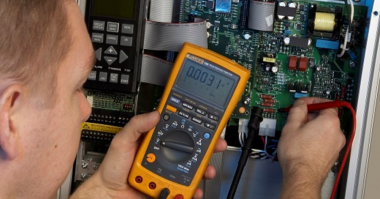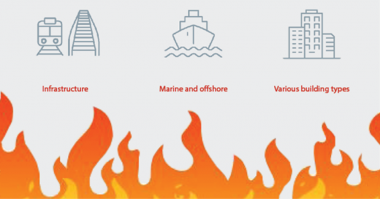Introduction
The global transition to low-GWP refrigerants is beginning in a disorderly manner in the United States — the world’s most mature HVAC market. In the absence of a federal framework, individual states are beginning to regulate HFCs. A handful of states are following SNAP Rules 20 and 21, the EPA regulations that were vacated by the courts. California, however, is going much further, proposing regulations for residential and light commercial air conditioning. This state-by-state patchwork of regulations with various timelines is creating serious problems for equipment manufacturers that supply products not to individual states, but to a national market. And given that the new low-GWP refrigerants, compared to their HFC predecessors, have different flammability characteristics and require building codes to be updated, this transition must be managed in an orderly manner to prevent serious consequences for consumers.
California’s proposed AC regulations shorten the transition timeline
The potential consequences of this choppy regulatory landscape are most severe in the residential and light commercial air conditioning (AC) market. The EPA’s SNAP Rules 20 and 21 did not impact residential and light commercial AC, which allowed the transition to occur without significant building and fire code updates to accommodate mildly flammable refrigerants. California, however, is proposing to regulate these sectors to achieve its ambitious climate goals. The next opportunity to update California’s building code is during its triennial code cycle, with publication of the code in January or February 2022. Although work has already begun to prepare for the transition, there is concern about meeting the January 1, 2023 transition date with final codes understood only one year earlier.
The California Air Resources Board (CARB) is the state agency charged with developing the regulations and it is guided by California’s commitment to reduce greenhouse gas emissions from HFCs by 40 percent by 2030 compared to a 2013 baseline. Thus, California is writing HFC phasedown rules that go beyond those laid out in SNAP Rules 20 and 21 and put it on a pace ahead of the Kigali phasedown schedule. In terms of the residential and light commercial AC market, CARB is proposing the following:
- A ban on AC systems using refrigerant with GWP greater than 750 GWP by January 1, 2023.
- A ban on servicing existing equipment with refrigerant with a GWP greater than 1,500 GWP by January 1, 2022.
o A potential exemption for reclaimed refrigerant and R-410A remains an option.
Barring the commercial acceptance of R-466A, the only listed lower toxicity refrigerant that does not propagate a flame (A1 refrigerant), these regulations would require the use of A2L (lower flammability) or A3 refrigerants (higher flammability).
Flammable refrigerants are new to the U.S. air conditioning market — but not the world
A2Ls, as categorized by the American Society of Heating, Refrigeration, and Air Conditioning Engineers (ASHRAE), are the class of low-GWP refrigerants expected to replace the phased out HFCs in many applications. Globally, A2Ls have been used safely for years. Today, more than 8 million mini-split systems around the world are using R-32, and 80 percent of new cars sold in the U.S. use A2Ls in their air conditioners.
A3 refrigerants such as R-290 (propane) are highly flammable and their use is already included in safety standards. Some of the requirements for their use include: no more than 150g per refrigerant loop, no nearby sources of ignition and no use near points of egress. Some manufacturers have redesigned their products to safely use flammables, reducing refrigerant charge and the potential for leaks. One manufacturer reports that 6,000 commercial propane ice machines are operating with no problems.
Since A2Ls and A3s are new to the United States and these replacement refrigerants have different flammability characteristics, safety, training and building code updates are important considerations.
U.S. codes & standards try to catch up
ASHRAE & UL standards
ASHRAE is the body governing standards for applications and UL does the same for equipment. ASHRAE 34 is the standard that classifies refrigerants based on toxicity and flammability. ASHRAE 15 is the standard governing the installation of systems using these refrigerants. ASHRAE 15 Addendum “d” was approved in October 2018 to regulate the use of A2Ls in “high probability systems,” which include unitary systems, split systems, multi-split systems, rooftop units and other similar equipment. Addendum “d” stipulates, among other things, that for larger charge systems, leak detectors are required, and they must trigger mitigation (e.g., ventilation to dilute the refrigerant) if 25 percent of the lower flammability limit concentration is detected. ASHRAE Addendum “h” regulates the use of A2Ls in systems located in machine rooms and stipulates that when the charge exceeds the Refrigerant Concentration Limit (RCL) the system must be installed in a machine room with a number of important safeguards including ventilation requirements. Neither Addenda “d,” nor “h,” however, covers refrigeration application. ASHRAE committees are currently working on a separate addendum for these applications.
UL 60335-2-40 regulates the use of A2L refrigerants in air conditioning equipment while UL 60335-2-89 does so for refrigeration equipment. These standards are used by manufacturers for building and listing equipment using flammable refrigerants. UL 60335-2-40 was recently finalized to fully allow the use of A2Ls and is available for incorporation into model codes. The process for finalizing UL 60335-2- 89 was started in July 2019. Edition 1 of UL 60335-2-89 allowed charges of 150g of any flammable refrigerant, and while Edition 2 will be based on IEC 60335-2-89, which allows 500g of R-290 and 1.2kg of A2Ls, UL 60335-2-89 may deviate from those charge limits.
ICC & UMC model codes
Once new standards are completed for A2Ls and A3s, they need to be included in the model codes, which are then used to write state and local building and fire codes. The adoption of these standards into the International Commercial Code (ICC) and the Uniform Mechanical Code (UMC), the two main model codes used by state and local jurisdictions, is not certain. The ICC recently voted against a measure to adopt UL 60335-2-40 into the 2021 model code. As the safety standards were only just completed, they were not adopted into the model codes in 2019. If these standards are not adopted into the two main model codes, states seeking to phaseout HFCs will have to orchestrate their adoption into state or local building codes. Leaders of national fire service organizations have expressed concern about exposing firefighters to flammable chemicals during fires.
Code uncertainties put a safe transition at risk
Since the UMC, which California predominately uses, failed to adopt ASHRAE 15 and UL-60335-2-40, the state will need to implement these standards directly into state building codes rather than through the adoption of the model codes. Typically, AC original equipment manufacturers (OEMs) require certainty that the building codes are in their final form at least three years before a regulatory implementation date. They need this time to engineer new equipment, test its efficacy and safety and certify that equipment with third-party testing labs like UL. This is an expensive and time-consuming process that must be completed before equipment can be commercialized. In addition, supply chains must be filled with parts used in equipment and equipment must be stocked in warehouses to be prepared for the transition.
To give the OEMs the time they need, the California building codes needed to be updated by January 1, 2020. Of course, that date has passed and, at this point, direct adoption of the safety standard during the next triennial code cycle would lead to certainty at publication of the building code at the beginning of 2022. CalFIRE, the California Department of Forestry and Fire Protection, will likely need to propose the addition of the ASHRAE and UL standards to California’s building code by June 2021 after going through an extensive stakeholder process, leaving just 18 months before CARB’s enforcement date. And, should CalFIRE require adjustments to ASHRAE 15 and UL-60335-2-40 beyond non-equipment related changes (e.g., labelling requirements), the OEMs and their suppliers would have very little time to respond. Even if all goes according to plan, this process puts the safe transition at risk with excessively tight timing.
Other alternatives include state legislation to require that the standards are adopted into the building codes. Should the codes be effective by January 2021, most, but not all, OEMs believe they could still meet CARB’s proposed January 1, 2023 implementation date. If this legislative option does not materialize, the industry is requesting that CARB postpone its enforcement date to three years plus the following January after the safety standards are adopted into the building codes.
This uncertainty is putting the safe refrigerant transition in serious jeopardy. Equipment using lower and higher flammability refrigerants must be thoroughly tested and all those who handle it must be properly trained. If the building codes are not updated very soon to incorporate ASHRAE 15 and UL-60335-2-40 as they are currently written and CARB enforces a January 1, 2023 implementation date, OEMs and the rest of the supply chain will have difficulty complying. Suppliers may not have sufficient parts available, technicians may not be fully trained — especially if the codes deviate from the standards as written, and the opportunity to further field-test equipment may be lost.
If equipment manufacturers are not able to rush their product to market, they may not have equipment that is legal to sell in California on January 1, 2023. Consider this scenario: CARB enacts the proposed regulations to take effect on January 1, 2023; CalFIRE submits a code change proposal in June 2021; and the triennial code is published in early 2022. This would leave OEMs with less than eight months to build, test and qualify systems — and that is assuming the code council does not make changes to CalFIRE’s submission. Under these circumstances, the OEMs and their suppliers cannot meet the schedule, which means that California businesses and residents will be unable to purchase new, legal AC equipment. Thus, consumers’ only option should their AC units break down is to repair it. Should repairs be too expensive or impossible, they simply will not have air conditioning.
The transition is coming — whether we like it or not
Adding to the complexity of this transition is the Montreal Protocol, the original international treaty finalized in 1987 to phase down Ozone Depleting Substances, or ODS, which included HFC predecessors CFCs and HCFCs. The Kigali Amendment to the Montreal Protocol amended the international treaty in 2016 to reduce greenhouse emissions from HFC refrigerants. The treaty allows each ratifying country to determine its own regulatory structure such as an outright ban, a quota system or an allocation. Thus far, the treaty has been ratified by 91 countries including the European Union, Japan, Australia, Mexico and Canada. The United States has not ratified the Kigali Amendment, but the amendment only needed 20 parties to ratify for it to be in force.
And while the U.S. does not have to comply with the HFC phasedown schedule until it ratifies the Kigali Amendment — and it is unlikely to do so under the current Administration, there are non-party trade provisions included that are now in force irrespective of a country’s ratification status. If the U.S. does not comply, American companies will not be allowed in 2033 to trade HFCs with companies in countries that have ratified the amendment. This would put American companies at a distinct disadvantage to their foreign competitors.
When the United States does ratify the Kigali Amendment or initiates a phasedown in compliance with the Kigali Amendment, it will need to begin its transition to low-GWP A2L refrigerants by 2026 to avoid a second transition to even lower-GWP refrigerants, such as A3s, shortly thereafter. Compliance with Kigali’s HFC phasedown schedule becomes increasingly more difficult the longer a country waits to begin, and for the U.S. it may become impossible to achieve using only A2Ls after 2026. Updating building codes to include lower flammability A2L refrigerants is proving an uphill battle; convincing the model codes (or individual states and jurisdictions) to include codes and standards for higher flammability refrigerants like propane maybe even more challenging. Furthermore, the industry has already spent billions of dollars on the current refrigerant transition without serious impact to consumers. A second and almost certainly more costly transition to A3s would likely have a substantial impact on consumer cost.
Conclusion
Understanding the state, federal and global regulations impacting the HVACR industry is incredibly challenging, especially considering the pace of change. Ironically, though, this multi-layered fabric of regulations is providing some certainty to an industry that was thrown into a bit of chaos when the federal courts struck down SNAP 20 and 21. Assuming California continues to move forward with its 2023 enforcement date for AC, the window for a U.S. HFC phasedown is clear: it MUST begin no sooner than 2023 and no later than 2026. The industry is beginning to understand this timeline and is making the proper preparations. This transition can be orderly should states swiftly adopt into their building codes ASHRAE 15 and UL-60335-2-40 as they are currently written and a federal framework to phase down HFCs be adopted. Otherwise, it could be a disorderly path of state legislation and regulatory action, with unprepared stakeholders and standards not adopted into building codes to meet a likely imminent regulatory compliance timeline. Industry continues to work diligently with all stakeholders to make sure the transition to low-GWP refrigerants is safe and orderly.




